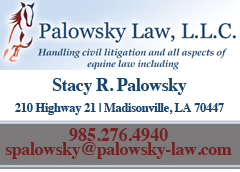Written by Dr. Kelly Hudspeth, DVM
Original Publish Date August 2014
EEE is a virus that is transmitted to horses by a mosquito bite. The mosquito bites an infected bird and then bites the horse. Birds serve as a reservoir for infection. Sometimes environmental factors increase the occurrence of infection due to simple things like a heavy mosquito population.
Once a horse is infected the virus attacks the central nervous system so a variety of signs can occur including fever and muscle fasciculation. The most common is a horse that staggers or gets down and cannot get up. The virus usually has a sudden onset and can be fatal in as little as three days. There is no treatment other than supportive care, and most cases end in death.
The virus can occur in humans but an infected horse is not contagious to humans. Mosquitos that feed on birds and then bite humans (the same way the horse is infected) are the source of the infection. There is no vaccine for humans so avoiding mosquitos is the best protection.
Horses can be vaccinated against EEE successfully. Two doses three to four weeks apart are given and then one dose a year after the initial vaccinations. Many owners vaccinate in the spring but most of the cases occur in the late summer or early fall. If six months has passed since a horse was vaccinated, another vaccination would be wise in an outbreak. It is important to buy vaccine from a trusted source. Correct handling and administration of the vaccine is vital.
An EEE diagnosis in a horse will not require quarantine so owners should report any suspicious signs to the local veterinarian. Communication can help warn others and promote vaccination to protect the equine population.





